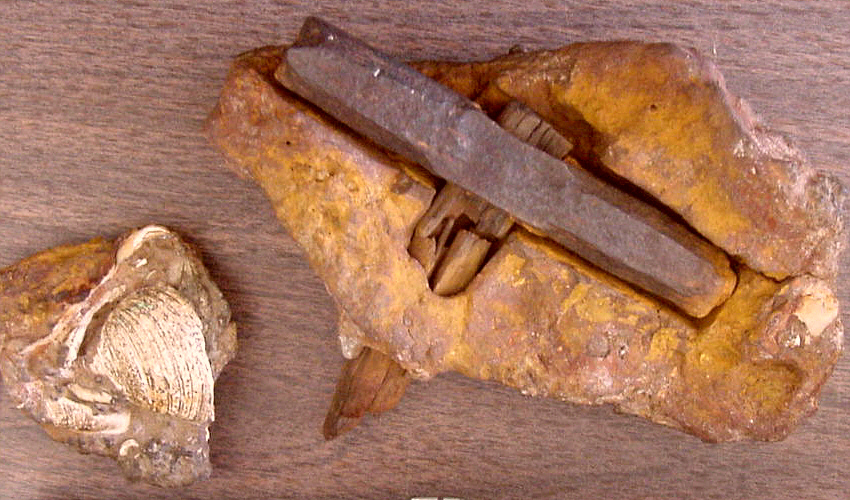- Joined
- Apr 2, 2005
- Messages
- 14,042
- Reaction score
- 2,042
I don't know about you, but I like shows like 'In Search Of...' from the 70's and 'Ancient Aliens' of today. While I think it is a bit comical that the conclusion to the latter show is always aliens no matter what, both shows discuss topics you don't really hear of anywhere else. Ancient Aliens lately has mentioned some things which cannot easily be explained. So while I don't anticipate the answers to be 'Aliens' on any of these, it does make me wonder if mainstream history could be so terribly wrong.
The first topic to discuss is the London Hammer.

While disputed, obviously, the rock formation it is in takes over 100 million years to form. The metal head has no carbon, which indicates a manufacturing technique not of the industrial age. The wood handle has gone through coalification which also suggests it is not simply a hammer from the 1800s as critics suggest.
This would all seem impossible, right? Dinosaurs still walked the Earth so there was supposedly no humans. While that's probably true, I've not read or seen a skeptic explain this away well. They seem to just dismiss it out of hand and ignore it.
And no, sorry, not aliens ;-)
The first topic to discuss is the London Hammer.

While disputed, obviously, the rock formation it is in takes over 100 million years to form. The metal head has no carbon, which indicates a manufacturing technique not of the industrial age. The wood handle has gone through coalification which also suggests it is not simply a hammer from the 1800s as critics suggest.
This would all seem impossible, right? Dinosaurs still walked the Earth so there was supposedly no humans. While that's probably true, I've not read or seen a skeptic explain this away well. They seem to just dismiss it out of hand and ignore it.
And no, sorry, not aliens ;-)

 )in the waterfall and they "turn to stone"?
)in the waterfall and they "turn to stone"?